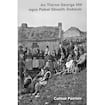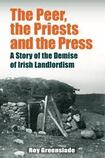

The most surprising thing about Lord George Hill (1801-1879) is that we have heard so little about him. In 2011, Sophia Hillan drew attention to him in her marvellous book on the women in his life, May, Lou and Cass. Now, within months of one another, two excellent biographies have appeared, the first in Irish and the second in English.
Aged 37, Lord George – fifth son of that very aristocratic family, the Hills of Hillsborough, Co Down – inherited enough money to buy about half of Gweedore – not a very prudent use of his inheritance – and at the same time married the love of his life, after a lengthy wait, evidence of his (and her) determined nature. She was Cassandra Knight, a niece of Jane Austen. They moved from Kent to Donegal, settling eventually in Ramelton, whereupon Lord George – a good Irish speaker – set about “improving” Gweedore – commuting the 28 miles once or twice a week, usually on horseback.
Apart from being written in different languages, by different authors, what distinguishes the new works? Plenty, so it is well worth reading both
Hot on the heels of Cathal Póirtéir’s stunning biography comes Roy Greenslade’s The Peers, the Priests and the Press, telling the intriguing life story with verve and wry humour – “There is destitution in Gweedore. There is no destitution in Gweedore. The tenants of Lord George Hill have been treated very badly. The tenants of Lord George Hill have been treated very fairly.”
Like Poirtéir, Greenslade weighs up the good and the bad, and similarly concludes that Hill, who saved almost all his tenants from starvation during the Famine, was motivated by idealism – paternalistic as it may have been.
READ MORE
Apart from being written in different languages, by different authors, what distinguishes the new works? Plenty, so it is well worth reading both. Greenslade – himself a journalist – emphasises the role of the press in the creation of Hill’s reputation, first lauding him as the perfect landlord, then knocking him off that pedestal. He focuses especially on Denis Holland, a persistently harsh critic.
Poirtéir, ethnographer, broadcaster and acknowledged expert on the Famine, dwells especially on the Gweedore community and way of life. Both contextualise Hill’s fall from public favour in the radically changing social and political landscape of post-Famine Ireland. Greenslade is somewhat more sceptical about his subject than Póirtéir, but each finally admires him as a man of vision and compassion, even if he was conditioned by his insufferably entitled class.
The studies, accessible and very well written, complement one another. By concentrating on one alluring individual they communicate history more effectively than any general survey ever could. These are two brilliant contributions to the history of 19th-century Ireland in general and of Donegal, that wistful county, in particular – and they are thoroughly enjoyable books.












